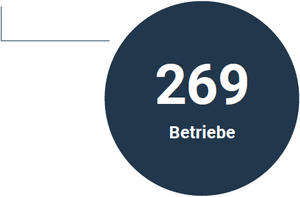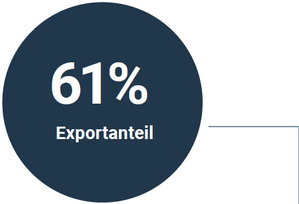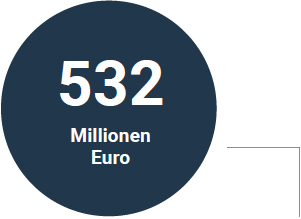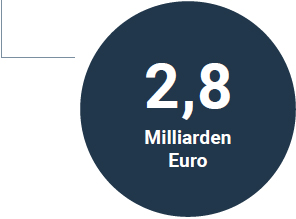Industry key figures of technical ceramics
Economic indicators:
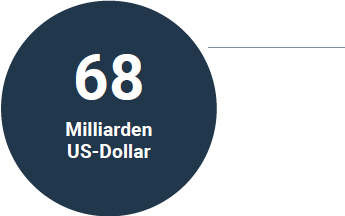
According to forecasts, sales in 2018
amounted to around USD 68 billion.
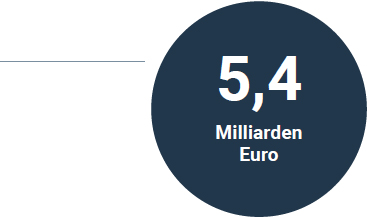
With annual sales of around EUR 5.4 billion and around 33,000 employees, the German ceramics industry is not one of the main economic sectors.
How is the German industrial ceramics sector positioned?
Germany is Europe's driving force in the production of high-performance ceramics. In the European market, they’re followed by France and the Netherlands, as well as Britain. Accordingly, Germany is also at the top in Europe when it comes to global exports, with an annual turnover of EUR 2.8 billion.
With around two thirds of the annual turnover of the entire industry generated by technical ceramics, this forms the most important sector in this industry. One reason for this is the multifaceted ways in which ceramic products can be used as key components in existing technical systems and production processes. From resistant seals and bulletproof vests to fuel cells, from lipstick to line systems in high-performance furnaces and heat sinks in high-performance electronics – in fact, almost every manufacturing industry now relies on the targeted use of ceramics for solving production problems and improving the quality of its own products.
Companies in the ceramics industry that are positioned in this niche are the “hidden champions on the world market”, because technologically they are highly specialised and at the same time extremely diverse in terms of application. The most important target sectors for technical ceramics are metal and steel production, the automotive industry, plant and mechanical engineering, metal processing, the electrical industry and the semiconductor industry.
Technical ceramics: Classification according to manufacturing sub-sectors in Germany
- With sales of EUR 1.6 billion and 5,811 employees, the refractory materials and goods sector occupies the leading position in the ceramics industry. Refractory ceramic products guarantee functionality in high-temperature processes. Ceramic refractory products are mainly used in large-scale melting processes of glass and metals, insulators and insulating parts.
- Industrial ceramics also encompasses the manufacture of ceramic products for other technical purposes (19 companies with 3,127 employees and an annual turnover of around EUR 531.8 million).
- Other major industries outside of these areas are tile and building ceramics, ceramic bathroom products, ceramic household goods and decorative items.
Markets and developments in technical ceramics – trends and forecasts
According to the DKG expert study, “Future potential of high-performance ceramics”, technical ceramics will be one of the key technologies within material and processing technologies during the next decade, especially in markets such as mechanical and plant engineering, sensor and medical technology, micro and power electronics. In these areas, technical ceramics can significantly increase productivity as a component of an entire system, creating the opportunities for their own growth. Nevertheless, there’s an increasing need for action in the European ceramics industry to meet the possible challenges of the coming years:
- Attractive market potential under increasing global competition
- Ever shorter product cycles
- Growing cost competition
- Volatile demand
- Competition from Asia
- Rising energy prices
- Scarcer raw material resources
- Rising transport costs
- Increasing regulation (environment, climate policy, health and safety at work)
- Trade barriers
- Decreasing workforces
- Import restrictions with importing countries such as customs duties (USA, China)
Technical developments:
- The ever increasing miniaturisation and growing integration density of modern semiconductor products are closely linked to the possibilities of piezoceramic actuator technology.
- Through the use of ceramic material designs and process technologies, new market opportunities are also developing in areas that were previously not typical for ceramics, such as battery technology, magnetic materials and gas turbine materials. Due to their diverse combination of excellent material properties, technical ceramics can be used in numerous high-performance industrial processes.
- A high potential for innovation in ceramic composite materials and hybrid composite materials based on ceramic-polymer-metal combinations.
- Unconditional expansion of existing competencies in the academic field with a view to complex ceramic material systems.
- Required development of competence networks.
Overall, the technical development of ceramic materials and their uses is far from over.
Sources:
Study: “Innovationsprozesse in der keramischen Industrie” [“Innovation processes in the ceramic industry”] Hans-Böckler Foundation, Dec. 2012
Annual Report: “Advanced Ceramic – A Global Strategic Business Report”
Global Industry Analysts, Inc., Oct. 2012
Press release of the Verband der Keramischen Industrie e.V. (VKI; German Association of the Ceramic Industry), May 16, 2013
Online source: Statista survey “Number of companies in the German ceramics industry 2012 to 2016”
“Unser Weg ins Jahr 2050:
Fahrplan der Keramikindustrie” [“Our path to 2050: Road map of the ceramics industry”], Alain Delcourt, Cerame-Unie A.I.S.B.L., The European Ceramic Industry Association, 2013


